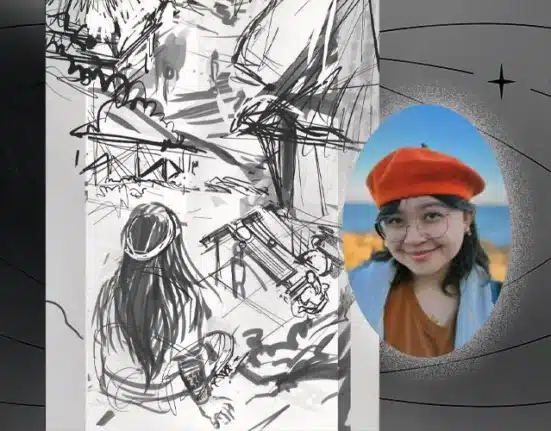AN insignia of excellence, a timeless honor, or a purpose—the Pulitzer Prize is one of the most prestigious awards bestowed upon professionals in the fields of journalism, literature, and music. In 2024, Fil-Am investigative reporter Nicole Dungca and Davaoeña visual artist Ren Galeno were finalists, along with journalist Claire Healy, for the Pulitzer Prize in Illustrated Reporting and Commentary for their graphic novel and webcomic entitled “Searching for Maura.”
Inspired by the research of Fil-Am interdisciplinary artist Janna Añonuevo Langhol, “Searching for Maura” also details the experience of Filipino indigenous peoples in their voyage and settlement at the 1904 St. Louis World’s Fair in the United States—the largest human zoo in history.
Who is ‘Maura?‘
Maura was a Filipino woman from the Kankanaey Tribe, part of the Igorot people, a collective term for ethnic groups in the Cordillera region of the Northern Philippines. She was one of over 230 Filipinos that boarded the Shawmut, a U.S. commercial ship headed to St. Louis’s exhibition of U.S. expansionism. They endured more than a month at sea, crammed together in the lower level of the ship, where cargo or the poorest were placed.
Upon reaching the U.S., they were transferred to a train heading to St. Louis for five days, suffering extreme changes in the temperatures between hot and cold and developing pneumonia-caused deaths. Maura was not spared from the infection and died alone at the St. Louis Mullanphy Hospital, dying before the fair even began.
The Igorrote village attracted the largest crowds in the Philippine section of the fair
Truman Hunt, an American military physician and exhibitor who was also a former lieutenant governor of Bontoc in the Philippines during the Spanish-American War, befriended the Igorrotes and brought them to the United States.
The Igorrotes were exhibited at various events and fairs, including the infamous 1904 St. Louis World’s Fair. Dubbed in derogatory terms as “head-hunting” and “dog-eating” Igorots, they were extremely objectified and exploited by both fair handlers and fairgoers, being forced to eat dog meat, performing forced ritual performances, and exposed to exploitative labor, among others.
In the graphic novel, the ways in which the indigenous peoples were exoticized were shown, including the Suyoc Tribe’s method of checking the quality of mined ores, which was to lick them clean—American fairgoers then thought they had the ability to taste the quality of the ores. Another was after the news of Maura’s death reached her tribe, wherein they mourned in circles for hours, eventually making the headlines of various American newspapers.
Brains of deceased indigenous peoples were also Hrdlika’s contributions to scientific racism
Ales Hrdlicka was a well-known Czech anthropologist who pioneered in the field of anthropology and was the first curator of the Smithsonian Museum’s physical anthropology collection. The bodies of some of the deceased indigenous peoples from St. Louis World’s Fair were donated, and some were also collected without consent. Eventually, the bodies were subjected to racial anatomy—specifically through a measurement of the sizes of their brains.
Hrdlicka’s was also notorious for his 268-numbered collection of brains or cerebellums, in which a Suyot Igorot’s (from the Kankanaey Tribe) cerebellum was found. This was assumed to be “Maura,” as she was the only Suyoc who died within the confines of the St. Louis Fair.
Bringing Maura’s story to light were fellow Filipinos Añonuevo, Dungca, and Galeno


Jannah Añonuevo’s research on the US colonization of the Philippines between 1898 and 1946 sparked an investigation into the Smithsonian’s collection of human remains. Along with the Washington Post, old archives were investigated to reveal Maura’s death certificate and a newspaper article about her body being shipped to the Philippines. Añonuevo looked for the descendants of the people from her research in Maura’s home province in the Cordillera region while looking for Maura’s burial site, hoping to build a memorial in her honor.
Nearly a century and two decades after Maura’s death, the 90+ member team of Nicole Dungca, Claire Healy, and Ren Galeno would publish an illustrated investigation into Maura’s experience and would be one of the finalists for the 2024 Pulitzer Prize.
Read “Searching for Maura” here: https://www.washingtonpost.com/history/interactive/2023/maura-philippines-smithsonian-brain-collection/
With reports from Rianna Mae B. Santiago
How useful was this post?
Click on a star to rate it!
Average rating 0 / 5. Vote count: 0
No votes so far! Be the first to rate this post.
We are sorry that this post was not useful for you!
Let us improve this post!
Tell us how we can improve this post?






